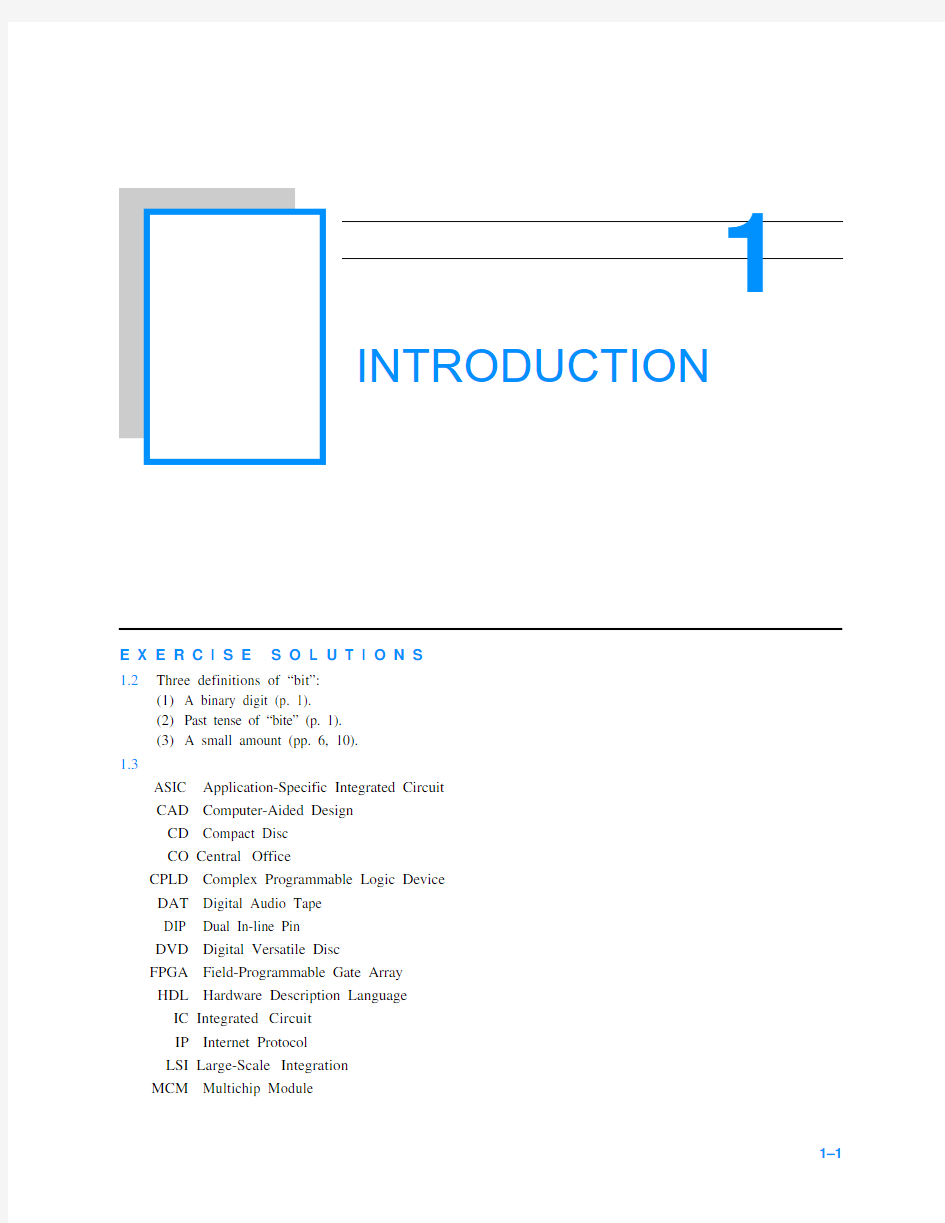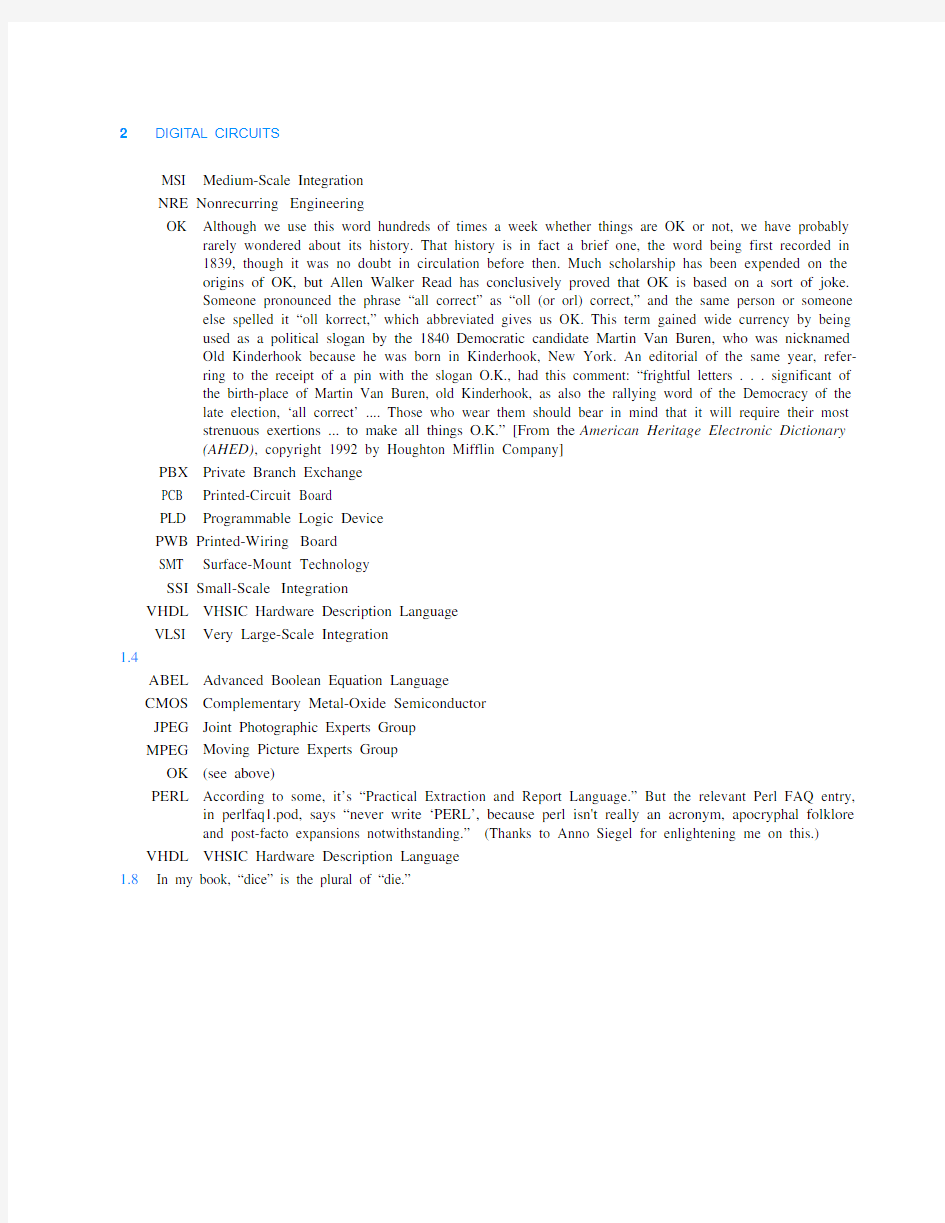

1
INTRODUCTION
E X E R C I S E S O L U T I O N S
1.2Three definitions of “bit”:
(1) A binary digit (p. 1).
(2)Past tense of “bite” (p. 1).
(3) A small amount (pp. 6, 10).
1.3
ASIC Application-Specific Integrated Circuit
CAD Computer-Aided Design
CD Compact Disc
CO Central Office
CPLD Complex Programmable Logic Device
DAT Digital Audio Tape
DIP Dual In-line Pin
DVD Digital Versatile Disc
FPGA Field-Programmable Gate Array
HDL Hardware Description Language
IC Integrated Circuit
IP Internet Protocol
LSI Large-Scale Integration
MCM Multichip Module
1–1
2DIGITAL CIRCUITS
MSI Medium-Scale Integration
NRE Nonrecurring Engineering
OK Although we use this word hundreds of times a week whether things are OK or not, we have probably rarely wondered about its history. That history is in fact a brief one, the word being first recorded in
1839, though it was no doubt in circulation before then. Much scholarship has been expended on the
origins of OK, but Allen Walker Read has conclusively proved that OK is based on a sort of joke.
Someone pronounced the phrase “all correct” as “oll (or orl) correct,” and the same person or someone
else spelled it “oll korrect,” which abbreviated gives us OK. This term gained wide currency by being
used as a political slogan by the 1840 Democratic candidate Martin Van Buren, who was nicknamed
Old Kinderhook because he was born in Kinderhook, New York. An editorial of the same year, refer-
ring to the receipt of a pin with the slogan O.K., had this comment: “frightful letters . . . significant of
the birth-place of Martin Van Buren, old Kinderhook, as also the rallying word of the Democracy of the
late election, ‘all correct’ .... Those who wear them should bear in mind that it will require their most
strenuous exertions ... to make all things O.K.” [From the American Heritage Electronic Dictionary
(AHED), copyright 1992 by Houghton Mifflin Company]
PBX Private Branch Exchange
PCB Printed-Circuit Board
PLD Programmable Logic Device
PWB Printed-Wiring Board
SMT Surface-Mount Technology
SSI Small-Scale Integration
VHDL VHSIC Hardware Description Language
VLSI Very Large-Scale Integration
1.4
ABEL Advanced Boolean Equation Language
CMOS Complementary Metal-Oxide Semiconductor
JPEG Joint Photographic Experts Group
MPEG Moving Picture Experts Group
OK(see above)
PERL According to some, it’s “Practical Extraction and Report Language.” But the relevant Perl FAQ entry, in perlfaq1.pod, says “never write ‘PERL’, because perl isn't really an acronym, apocryphal folklore
and post-facto expansions notwithstanding.” (Thanks to Anno Siegel for enlightening me on this.) VHDL VHSIC Hardware Description Language
1.8In my book, “dice” is the plural of “die.”